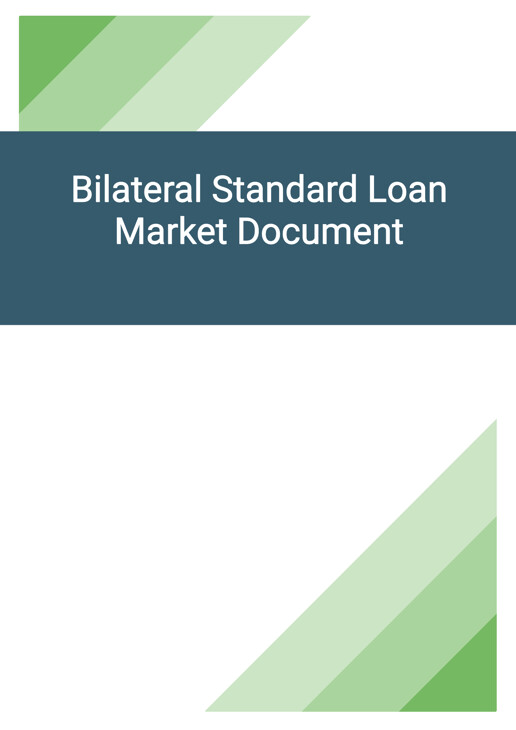
Bilateral Standard Loan Market Document
Guarantee for Commercial Loan
This document can be used to draft a guarantee for a commercial loan. This standalone Guarantee to be utilised with the Bilateral Standard Loan Document. Within the document, there will be cross referencing which reflects the corresponding version of the Bilateral Standard Loan Document, e.g. Borrower Friendly loan to be used with Borrower Friendly guarantee.
How to Tailor the Document for Your Need?
01
Create Document
Fill in the details of the parties. You can click the "Fill with Member’s Information" button to complete it with information saved to your account.
02
Fill Information
Please fill in any additional information by following the step-by-step guide on the left hand side of the preview document and click the "Next" button.
03
Get Document
When you are done, click the "Get Document" button and you can download the document in Word or PDF format.
04
Review Document
The document should be signed by the authorised signatory (or directors of a company) and witnessed to complete the formality.
Document Preview
Document Description
The document titled 'Bilateral Standard Loan Market Document' is a deed of guarantee between Party 1, the guarantor, and Party 2, the lender. The purpose of this document is to establish the obligations and responsibilities of the guarantor in relation to the finance documents. The guarantor is entering into this deed to benefit its business and ensure the performance of the borrower's obligations.
The document begins with a background section, which explains the context and purpose of the deed. It states that the lender and the guarantor intend for this document to be a deed, even though the lender only executes it under hand.
The first section of the document is 'Definitions and Interpretation,' which provides definitions for various terms used throughout the deed. It incorporates defined terms from the facility agreement and clarifies the principles of construction.
The second section is 'Guarantee and Indemnity,' which outlines the guarantor's irrevocable and unconditional guarantee of the borrower's obligations under the finance documents. It also includes an indemnity provision, where the guarantor agrees to indemnify the lender against any cost, loss, or liability if any guaranteed obligation becomes unenforceable, invalid, or illegal.
The third section is 'Interest,' which specifies the default interest that will accrue if the guarantor fails to pay any amount on its due date. It also includes provisions for compounding the default interest with the overdue amount.
The fourth section is 'Tax Gross Up and Indemnities,' which addresses tax-related matters. It includes provisions for grossing up payments to account for any required tax deductions and indemnifying the lender for any tax-related losses, liabilities, or costs.
The fifth section is 'Other Indemnities,' which covers various indemnities separate from tax-related matters. It includes a currency indemnity provision, where the guarantor indemnifies the lender for any costs, losses, or liabilities arising from currency conversions. It also includes provisions for indemnifying the lender against costs, losses, or liabilities incurred in relation to stamp duties, registration taxes, and other similar taxes.
The sixth section is 'Costs and Expenses,' which outlines the guarantor's obligations to reimburse the lender for costs and expenses incurred in connection with the negotiation, preparation, execution, and enforcement of the deed and other finance documents.
The seventh section is 'Representations,' where the guarantor makes various representations and warranties to the lender. These include representations regarding its status, binding obligations, non-conflict with other obligations, power and authority, validity and admissibility in evidence, pari passu ranking, and governing law and enforcement.
The eighth section is 'Information Undertakings,' which sets out the guarantor's obligations to provide financial statements, information on litigation or administrative proceedings, and other information regarding the financial condition, business, and operations of the group.
The ninth section is 'General Undertakings,' which includes various undertakings by the guarantor. These include obligations to obtain and maintain authorizations, comply with laws, refrain from creating security over assets, and notify the lender of any defaults.
The tenth section is 'Changes to the Parties,' which addresses changes to the lender and the guarantor. It specifies the circumstances under which the guarantor's consent is required for the assignment or transfer of the lender's rights and obligations.
The eleventh section incorporates certain terms from the facility agreement into the deed, including provisions on the conduct of business by the lender, payment mechanics, and enforcement.
The twelfth section addresses the governing law and enforcement of the deed. It specifies the governing law and includes provisions for service of process if applicable.
The deed concludes with a signature page, where Party 2 and Party 1 sign and provide their respective names, addresses, emails, and contacts.
How to use this document?
To use this document, follow these steps:
1. Familiarize yourself with the document: Read the entire document carefully to understand its purpose, obligations, and provisions.
2. Gather necessary information: Collect the required information, including the names and addresses of the guarantor and lender.
3. Customize the document: Replace the placeholders in the document with the actual names, addresses, and other relevant details of the parties involved.
4. Review and finalize: Review the customized document to ensure accuracy and completeness. Make any necessary revisions or additions.
5. Execute the document: Have both the guarantor and lender sign the document. Ensure that the signatures are witnessed, if required.
6. Retain copies: Keep copies of the executed document for your records and provide copies to all relevant parties.
7. Monitor compliance: Regularly review the document to ensure ongoing compliance with the obligations and undertakings outlined in the deed.
8. Seek legal advice if needed: If you have any questions or concerns about the document or its implications, consult with a legal professional for guidance.
Not the right document?
Don’t worry, we have thousands of documents for you to choose from:



















